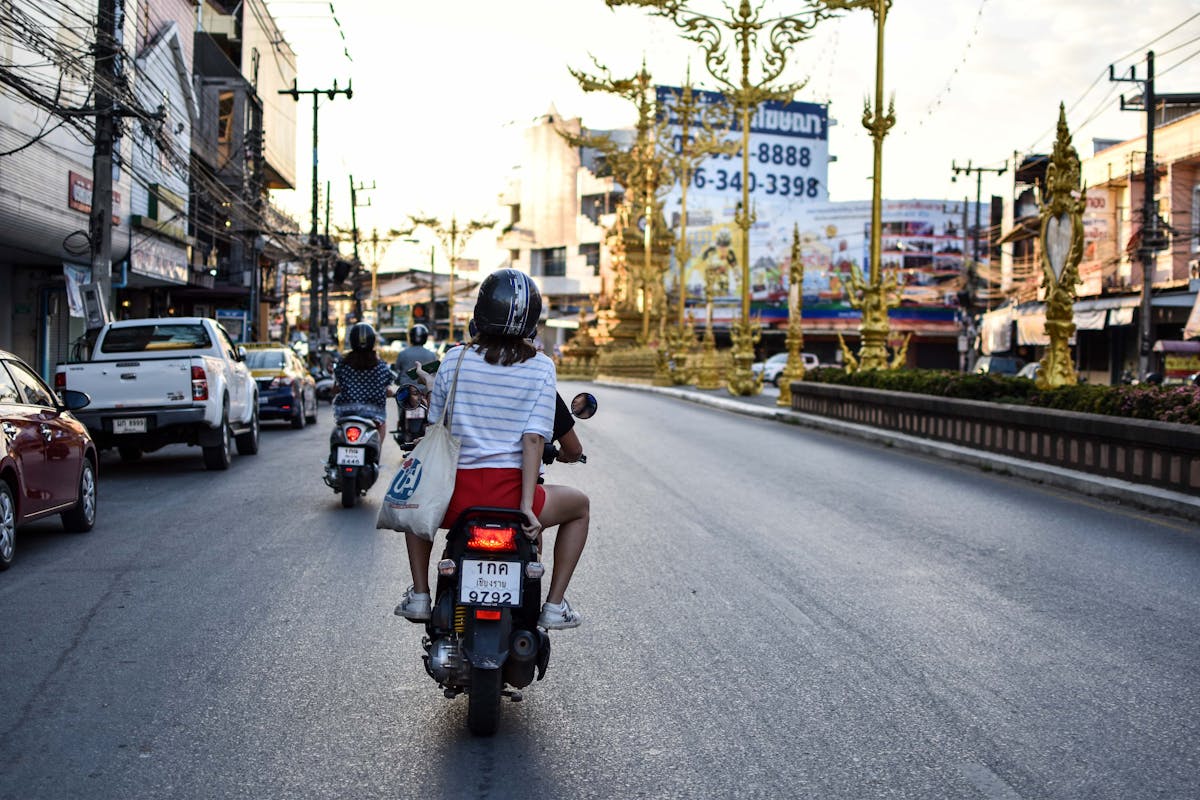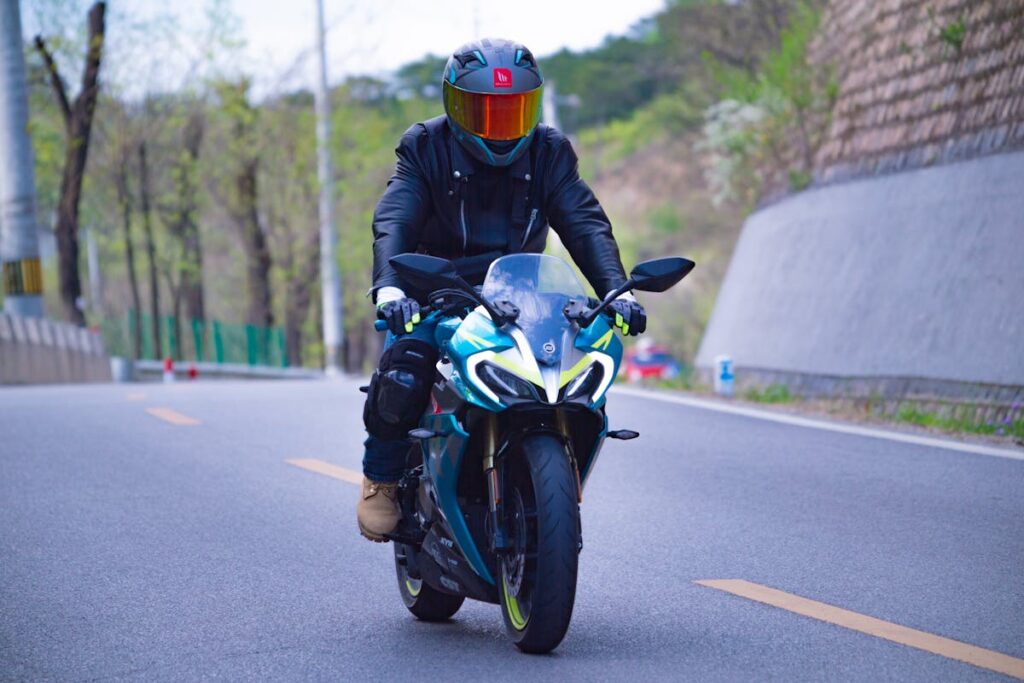Motorcycle accidents often have tragic outcomes, making safety a paramount concern for riders. Implementing key safety measures can greatly reduce the risk of fatal incidents. Protective gear, visibility, speed management, defensive riding, and regular maintenance form the foundation of these precautions. Each element plays a critical role in safeguarding riders against potential hazards on the road. Understanding and adopting these practices could be the difference between life and death for motorcyclists.
Wear Proper Protective Gear
Proper protective gear is essential for reducing the risk of injury in motorcycle accidents. A motorcycle helmet benefits riders by providing vital protection against head trauma, greatly lowering the risk of fatal head injuries. Helmets are engineered to absorb impact and distribute force, minimizing the damage during a collision. Additionally, riding jackets play an important role in safeguarding the rider’s body. Constructed from durable materials such as leather or advanced synthetics, these jackets offer abrasion resistance, protecting the skin from severe scrapes and cuts. Many riding jackets also include armor at key impact points like shoulders, elbows, and spine, enhancing protection. Together, helmets and riding jackets form an indispensable combination, forming the first line of defense against potential injuries on the road.
Stay Visible to Other Road Users
Visibility is an essential factor in preventing motorcycle accidents, often making the difference between a safe ride and a potential collision. Motorcyclists should prioritize being seen by other road users. Reflective clothing, for instance, greatly enhances a rider’s visibility, especially in low-light conditions. These garments use retroreflective materials to bounce light back to its source, making the motorcyclist more noticeable to drivers. In conjunction with reflective gear, utilizing bright lights is vital. Motorcycles equipped with high-intensity headlights and auxiliary lights can dramatically improve visibility during both day and night. These lights help in signaling presence, especially in adverse weather conditions. By integrating reflective clothing and bright lights, motorcyclists can effectively reduce the risk of being overlooked by other vehicles on the road.

Maintain a Safe Speed
While maneuvering through the complexities of road traffic, maintaining a safe speed is essential for motorcyclists to minimize the risk of accidents. Adhering to established speed limits is important as it guarantees that riders have adequate reaction time to respond to unexpected obstacles and changes in traffic conditions. Speed limits are set based on thorough analysis of road design, traffic density, and environmental factors to optimize safety. Additionally, adjusting speed according to current traffic conditions is critical. Heavy traffic, inclement weather, and poor visibility necessitate reduced speeds to maintain control and prevent collisions. Consistently maintaining a speed that is appropriate for both the legal limits and the surrounding environment can greatly enhance safety and reduce the likelihood of fatal incidents on the road.
Practice Defensive Riding
In addition to maintaining a safe speed, adopting a defensive riding approach greatly enhances a motorcyclist’s safety. Defensive riding requires heightened road awareness, enabling the rider to anticipate potential threats and react appropriately. This proactive strategy involves continuously scanning the environment for potential hazards, such as erratic drivers, road debris, or sudden changes in road conditions.
An essential component of defensive riding is hazard perception, which involves recognizing and evaluating potential dangers early. By maintaining a safe following distance and being prepared for sudden stops or evasive maneuvers, motorcyclists can considerably reduce the risk of collisions. Moreover, understanding the behavior of other road users and adapting to unpredictable situations are key aspects of defensive riding. This approach guarantees improved decision-making and increased overall safety.
Regularly Inspect and Maintain Your Motorcycle
Performing regular inspections and maintenance on a motorcycle is vital for guaranteeing peak performance and rider safety. Proper maintenance involves checking important components such as tire pressure and brake functionality. Tire pressure should be checked before every ride, as incorrect levels can lead to reduced traction and increased stopping distances. Maintaining the manufacturer’s recommended pressure guarantees ideal contact with the road surface, enhancing stability and control.
Brake functionality is another essential aspect that requires frequent evaluation. Riders should inspect brake pads for wear and verify that brake fluid levels are adequate. Any signs of diminished braking efficiency, such as squeaking or reduced responsiveness, should be addressed immediately. By adhering to these maintenance practices, motorcyclists can greatly reduce the risk of accidents and guarantee a safer riding experience.
Frequently Asked Questions
How Can Weather Conditions Affect Motorcycle Safety?
Weather conditions greatly impact motorcycle safety, particularly through rainy conditions and icy roads. Reduced traction and visibility increase the likelihood of accidents. Motorcyclists face heightened risks due to less stability and control compared to enclosed vehicles.
What Are the Best Practices for Handling Road Hazards?
The best practices for handling road hazards include enhancing road awareness through constant scanning and improving hazard recognition by anticipating potential threats such as debris or potholes, allowing for timely adjustments and maintaining control of the motorcycle.
How Can Motorcycle Riders Manage Fatigue on Long Trips?
Motorcycle riders can manage fatigue on long trips through effective fatigue management and strategic trip planning. This includes scheduling regular breaks, ensuring adequate sleep before the journey, hydrating, and maintaining a balanced diet to sustain energy levels.
What Are the Legal Requirements for Motorcycle Insurance?
Legal requirements for motorcycle insurance vary by jurisdiction but generally mandate minimum coverage limits. Policy types include liability, collision, and extensive. Riders should guarantee compliance with local laws while considering additional coverage for enhanced protection.
How Does Lane Splitting Impact Motorcycle Safety?
Lane splitting impacts motorcycle safety by offering benefits such as reduced congestion and shorter travel times. However, it presents risks, including increased collision potential with vehicles changing lanes and reduced visibility to other drivers.

